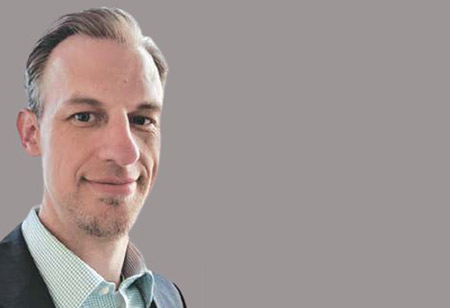Thank you for Subscribing to Healthcare Business Review Weekly Brief

The Importance of Nutrition in Chronic Non-healing Wounds
Healthcare Business Review
Dr. Maeder attended medical school at the University of Cincinnati and completed residency at the St Anthony Family Medicine Residency Program in Denver. He now works as a panel physician for the Platte Valley Medical Center Advanced Wound Care Center in Brighton, CO. His scope of practice includes traumatic wounds, diabetic foot ulcers, venous ulcers, arterial insufficiency, pressure wounds and many others. He uses a wide range of therapeutic modalities including hyperbaric oxygen.
Chronic non-healing wounds have a significant impact on the health of many Americans. It is currently estimated that 6.5 million Americans are affected by wounds such as these, and that number is expected to continue to rise. Chronic wounds can have a variety of causes. Each cause contributes to impaired wound healing by increasing systemic and/or local inflammation. Inflammation can be a result of pressure, poor blood flow, diabetes, infection, malignancy, autoimmune disease and many others.
Care of chronic wounds requires identification and treatment of the underlying cause. Similarly, wound healing can be enhanced by addressing chronic inflammation. Two critical and often underestimated or overlooked players in chronic inflammatory states are nutrition and exercise. The historically touted advice has been for patients with chronic non-healing wounds to increase their dietary protein intake. Protein is considered the “building blocks” of the human body and is required to grow new tissue. A low protein level is expected to result in slower rate of tissue growth and therefore, delayed wound healing.
There is a misconception that people should increase their intake of animal meats in order to get more protein. The typical western diet consumed in the United States is already very high in meat as well as processed food. In actuality, plant-based foods not only contain plenty of protein but contain proteins that can be more readily used by the body. Animal proteins are often more inflammatory and may contribute to worsening systemic inflammation. Great sources for plant-based protein include: beans and other legumes, nuts and seeds.
Proteins are comprised of twenty different amino acids. Eleven of those can be synthesized by the human body and are called non-essential. Nine of those cannot be synthesized and must be consumed through diet. Those nine are referred to as essential amino acids and include: phenylalanine, valine, threonine, tryptophan, methionine, leucine, isoleucine, lysine and histidine. While all are necessary for a healthy body, threonine, methionine, lysine and isoleucine appear directly related to wound healing. Soy, quinoa and buckwheat specifically contain all 9 essential amino acids.
Not only should people work to eat adequate healthy foods, but people should also work to reduce unhealthy foods
Some people choose to eliminate animal proteins altogether, and each individual must make the decision this is best for oneself. Most people need not completely eliminate meat from the diet. It is sound advice for any person to balance the diet with more fruit and vegetables, but some meat can still be a small part of a healthy diet for most.
Not only should people work to eat adequate healthy foods, but people should also work to reduce unhealthy foods. Processed foods often contain any combination of flavor enhancers, preservatives, emollients, sugars, artificial sweeteners and chemicals. Many of those substances can promote inflammation in the body which can lead to disease and delayed wound healing. These additives serve to improve flavor, increase shelf life and reduce manufacturing cost. Although those improvements may improve sales, they are not intended to improve health.
A healthy diet and frequent exercise can have a great impact on many chronic inflammatory conditions such as: heart disease, diabetes, autoimmune disease and of course, chronic non-healing wounds. As medical interventions advance, nutrition and exercise are often forgotten. Nevertheless, nutrition and exercise remain the most powerful treatments available.









